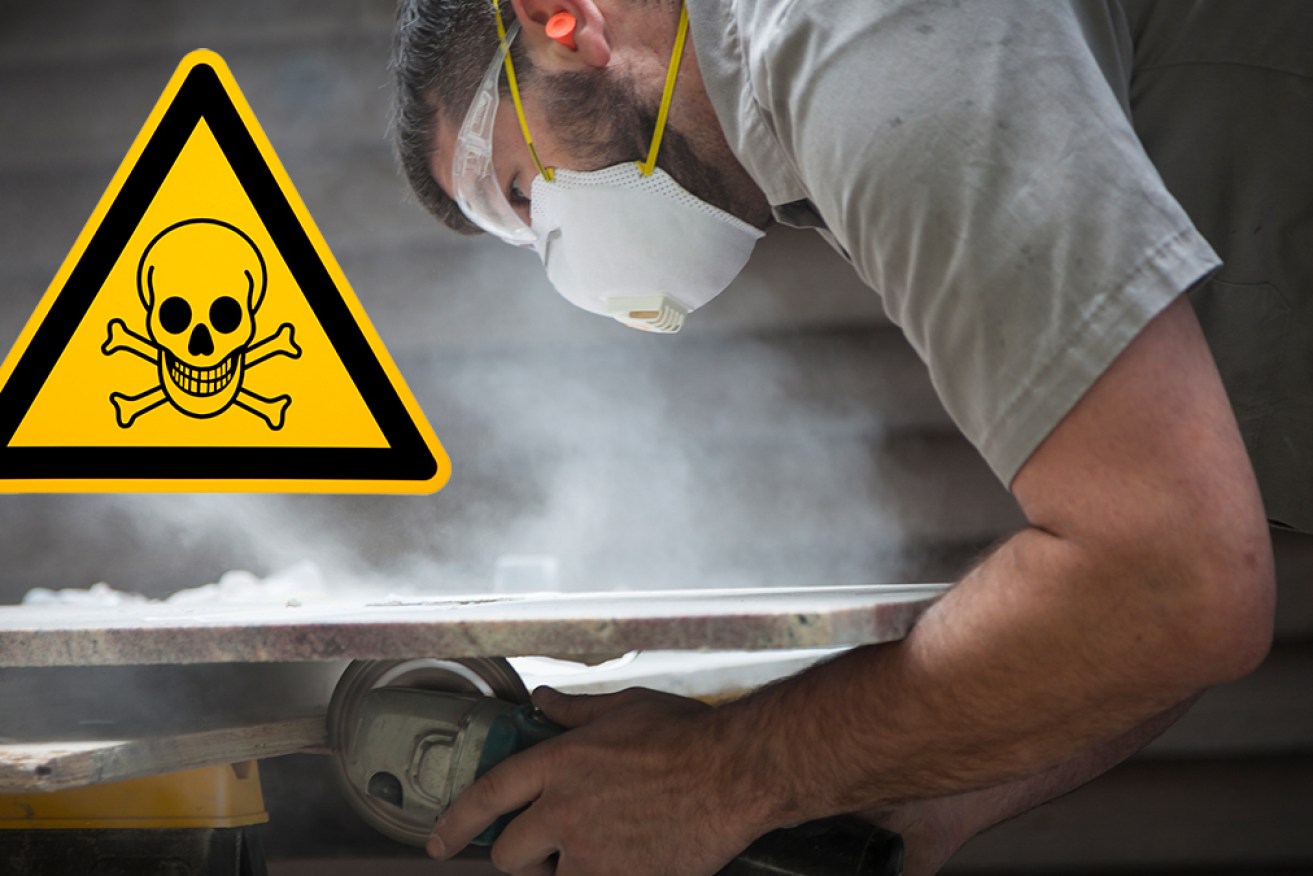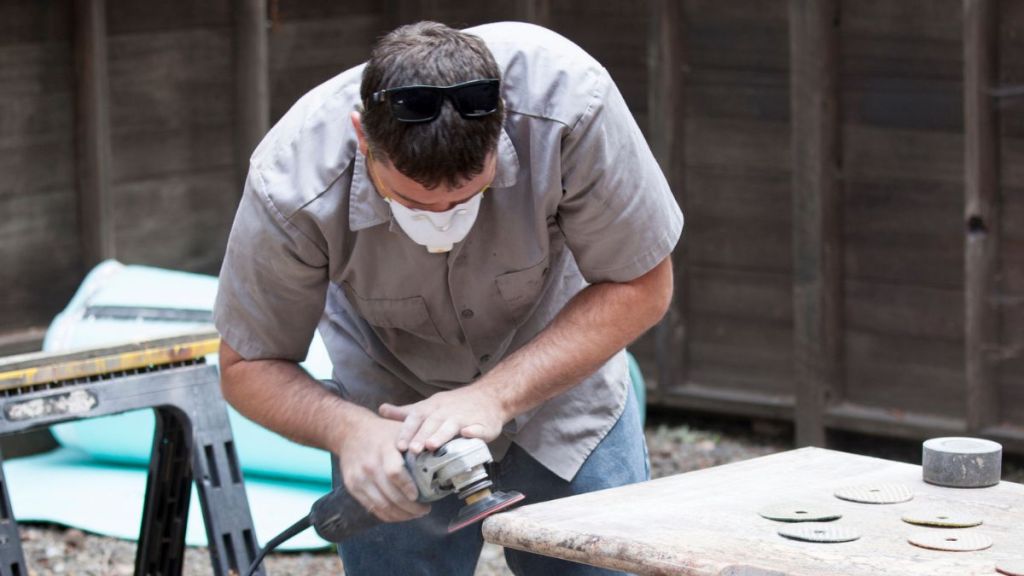Extract from The New Daily

Engineered stone benchtops are a danger to those who work with them. Photo: TND/Getty
With a nation-wide ban on silicosis-linked engineered stone products set to begin in July 2024, some details – including how the ban will be rolled out within the states – remain to be determined.
Minister for Industrial Relations Tony Burke met his state counterparts before the ban was announced, and each state will play a major part in implementing it within their jurisdiction.
Although a few questions still remain, here is what we know about the ban.
What is silicosis?
Silicosis is a long-term, incurable lung disease that is caused when fine particles of silica enter a person’s lungs.
Crystallised silica can be found in types of stone, clay, sand and rock, and is spread into the air when the materials are cut, ground or split.

Silicosis occurs when someone is exposed to crystalised silica. Photo: Getty
Exposure can lead to a persistent cough, shortness of breath, weakness and tiredness, respiratory failure and death.
Stonemasons, stone cutters, construction, demolition, worktop manufacturing and fitting, pottery, glass mining and sandblasting workers are considered at risk of coming into contact with high-silica products.
How the ban happened
The CFMEU started a campaign in the middle of this year, pressuring state and federal officials to ban engineered stone.
It published case studies of people affected by the incurable lung disease and their families, and promised to ban engineered stone from worksites by the middle of 2024 unless action was taken.
Former stonemason Kyle Goodwin, who has silicosis and featured heavily in the CFMEU campaign, told the ABC the ban was a “decision a long time in the making”.
“It’s the only decision the Labor government could come to in supporting workers,” he said.
“It’s good to get the result we have been hoping for.”
Unions have compared its use to asbestos, which was banned in 2003 after being used in buildings in more than 3000 different construction materials.
Am I at risk?
In mid-2023, a Safe Work Australia report said there is no safe level of dust when engineered stone is cut, even using ‘wet-cutting’ techniques, where water is applied to the product while it is being shaped.

Every state and federal workplace minister signed off on the Safe Work report. Photo: AAP
Studies have found that more than 275,000 workers are exposed to high levels of silica in a variety of industries, and up to 103,000 people would be diagnosed with silicosis if the ban wasn’t implemented.
If someone has an engineered stone product in their house, they aren’t at risk of silicosis unless the product is broken, ground or cut, and silicosis is usually caused by long-term exposure.
What comes next?
How the ban is implemented will be left up to the states, but every workplace minister agreed to the middle of 2024 timeline.
The timeline has a caveat for builders who have already signed contracts to use engineered stone products, and there is yet to be a date set for when import of the products will be blocked by the federal government.
Many health professionals highlighted while the ban is a huge positive, there are still plenty of other ways workers are being exposed to silicosis-causing materials.
This call was echoed by the Australian Workers Union after its national secretary Paul Farrow said laws need to be strengthened in other areas.
“Unfortunately, for most of this 600,000, there can be no ban on the materials that expose them to silica in industries such as construction, tunnelling, quarrying, mining, road work and more,” he said in a statement.
“Reform is more complex, but no less important.
“Primarily we need to strengthen the Work Health and Safety Act to provide a clear definition for high-risk silica work and introduce strong provisions for working around the hazard.”
No comments:
Post a Comment